How Long Does Pearl Jewelry Last?

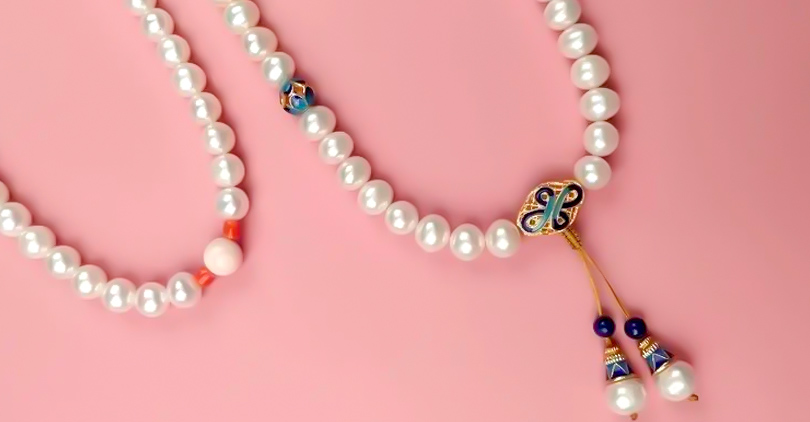
For centuries, people have been drawn to pearl jewelry because of its timeless beauty and elegance – not to mention the fact that it lasts a long time. But just how long can pearls really live up to expectations?
Pearl jewelry can survive for generations if it's looked after properly. However, there are many factors that come into play when we consider how long they will last.
One big factor is the quality of the pearls themselves. Those with higher standards often have thicker nacre coatings, which means they are better protected and less likely to suffer damage than those that are thinner.
Other important factors include how frequently the pearls are worn, how they're stored when not being worn, exposure to chemicals or substances that could damage them, and using proper cleaning techniques. Thinking about these things will help keep your pearls beautiful. They'll stay looking great for a long time.
If you're considering buying pearl jewelry (or if you already own some special pieces), it's important to know about pearls' potential lifespan. We'll explore this interesting topic more deeply – so don't go away!
The Lifespan of Different Types of Pearls
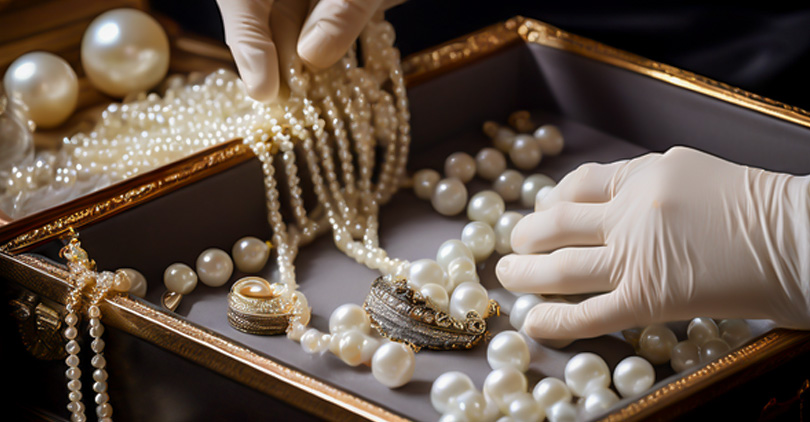
If we consider longevity and durability, different types of pearls have varied durations. Let's break it down into three primary categories: natural pearls, cultured pearls, and freshwater versus saltwater pearls.
Natural Pearls
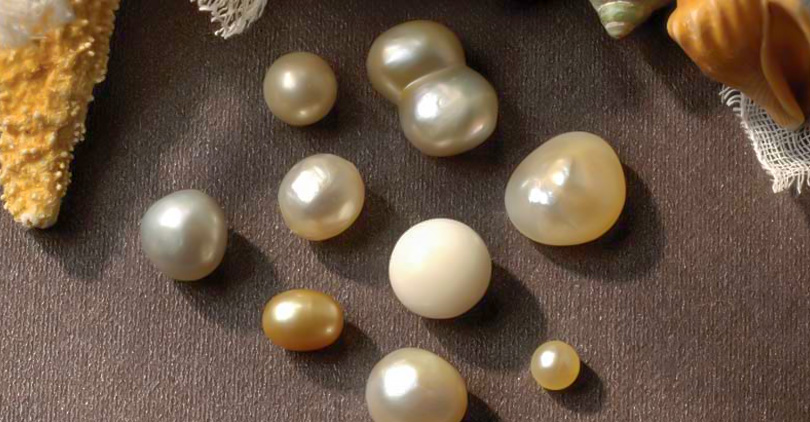
Because they develop without human intervention inside mollusks such as oysters or mussels, natural pearlsare both rare and often extortionate. Their nacre is also more likely than not to be thinner overall compared with cultured pearls. Despite this, with reasonable care, they will last a lifetime or more and can always be passed down to loved ones.
Cultured Pearls
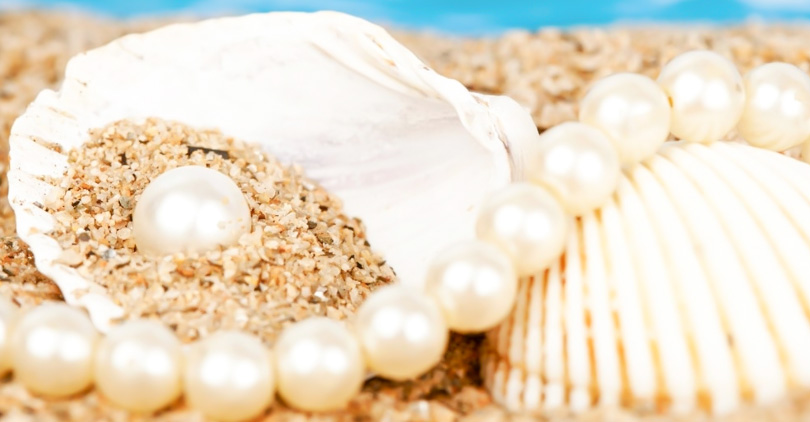
Today, the market is dominated by cultured pearls, which are produced with human intervention. These are created by inserting an irritant into an oyster or mussel; in response, the creature coats the irritant in layers of nacre, producing a pearl.
Cultured pearls can also endure for many generations like natural ones, although they may not last quite as long because their nacre coating is usually thinner. With regular cleaning and careful storage to prevent scratching, cultured pearls can retain their luster and beauty for decades or even longer.
Freshwater vs. Saltwater Pearls
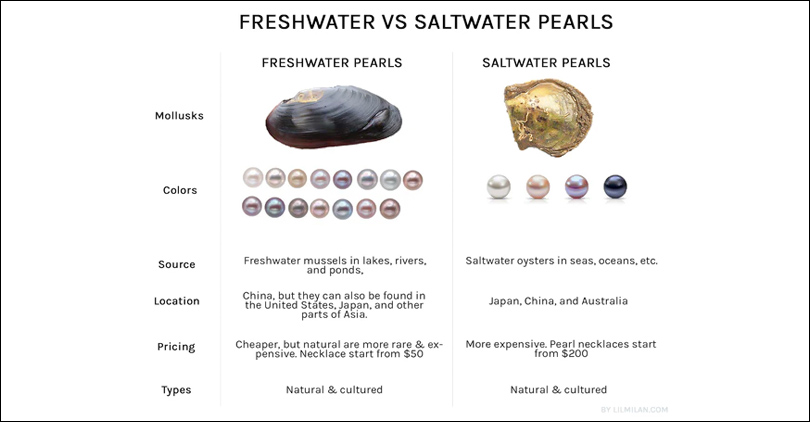
The cultivation conditions for pearls have an impact on how long they last. Freshwater pearls, which come from mussels in rivers and lakes, often have thicker layers of nacre and are, therefore, more durable.
Saltwater pearls, cultivated in oysters in oceans, tend to have thinner nacre layers and may not wear as well over time. That said, with proper care, such as gentle handling and avoiding contact with chemicals, saltwater pearls can remain beautiful for many decades.
Factors That Affect the Longevity of Pearl Jewelry
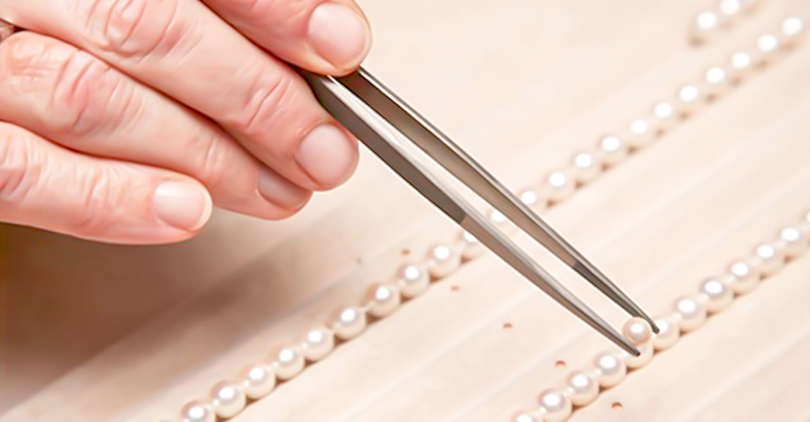
When considering the life of pearl jewelry, there are multiple factors to take into account. Knowing these elements can help you keep your pearls dazzling and beautiful for many years:
Quality of the Pearls
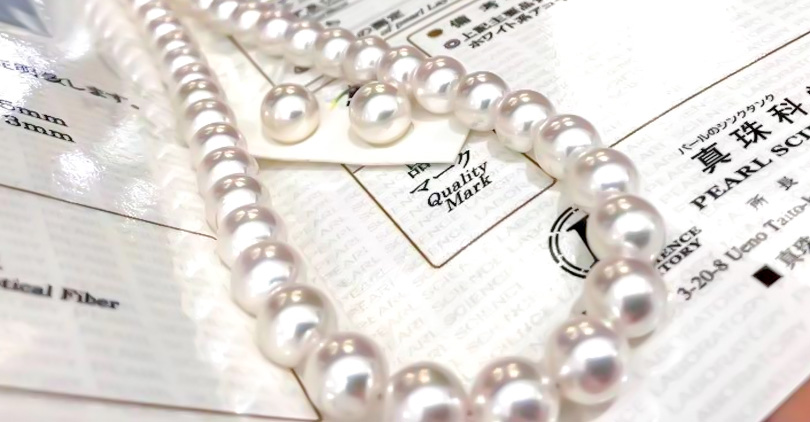
It is important to consider the quality of the pearls themselves when determining how long they will last. Pearls that are higher in quality, with thicker layers of nacre and fewer blemishes or imperfections, tend to be more durable and have a longer lifespan overall. These types of pearls can handle daily wear and tear better than others without becoming dull.
For instance, Tahitian pearls have a reputation for being very sturdy because their nacre layers are so thick. As such, they can be worn frequently without losing their shine or suffering major harm.
On the other hand, freshwater pearls are also lovely, but they tend to have thinner coatings of nacre and can get harmed more easily if you’re not careful with them.
Care and Maintenance
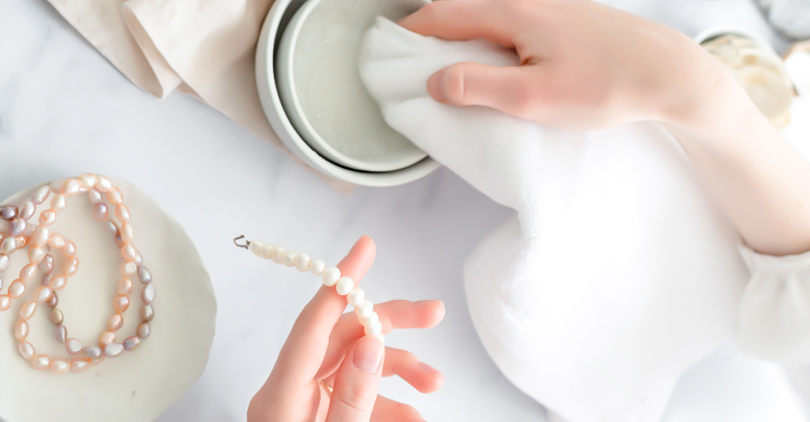
Taking good care of your pearl jewelry is important if you want it to last. To prevent scratches, store pearls separately from other gems or metals. Keep them out of direct sunlight, excessive heat (like on a stove), or overly humid conditions because too much moisture can make them dull the delicate surface.
You should clean them regularly—but gently! Use warm water and mild soap or a cleaner made specially for pearls. Don't use any chemicals that are too harsh or any abrasives. Both can wear away the nacre coating that gives pearls their beautiful luster.
Frequency of Wear
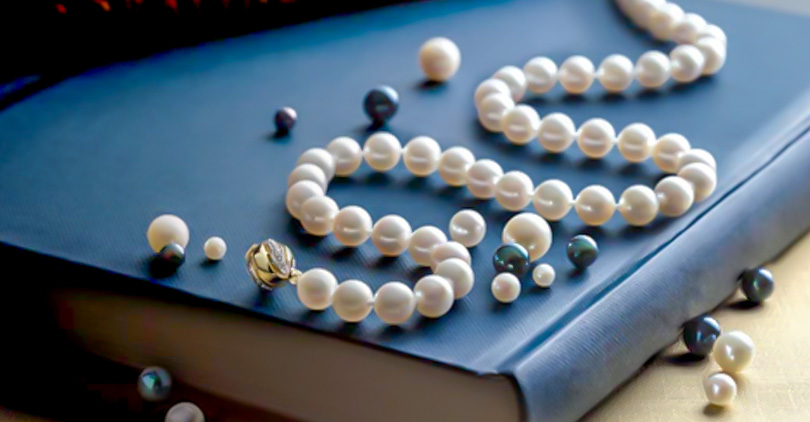
The amount of time you wear pearl jewelry affects how long it will last. Pearls are very strong, but if you wear them all the time, they might get scratched or damaged by things like lotion and perfume.
If you want your pearls to stay looking perfect for years, think about only wearing your pearl earrings or necklaces when there's a special event—not every day.
Environmental Factors
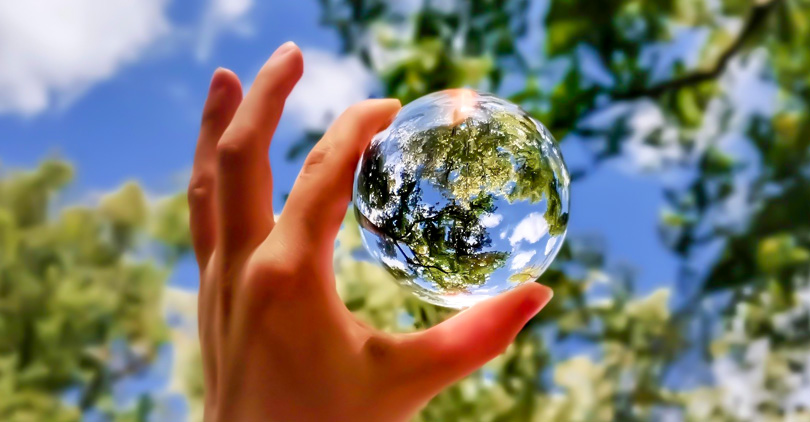
Environmental factors are vital in determining the lifespan of your pearls. Extreme temperatures, fluctuations in humidity levels, chlorine found in pools, or even contact with chemicals present in hairsprays or other cosmetics can all impact the integrity of your pearls.
To give an example, prior to swimming or partaking in activities where your pearls may come into contact with these harmful substances, they should be removed and stored safely.
Tips for Extending the Life of Pearl Jewelry

To keep your pearl jewelry looking beautiful, you need to take good care of it. Follow these tips from the experts to make sure your pearls always dazzle:
Proper Cleaning Methods
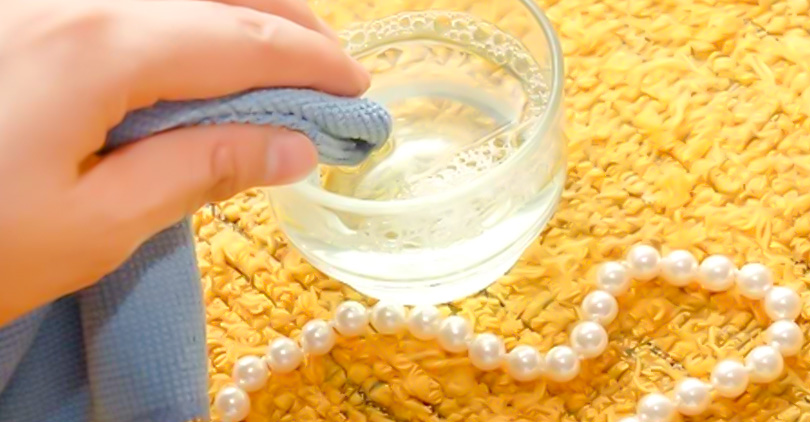
To keep your pearls in good condition, it's important to clean them carefully. After you've worn them, take a soft cloth and gently wipe each pearl to remove any dirt or grease. If they need deeper cleaning, mix some mild soap with warm water; use a soft cloth dipped in this mixture to wipe the pearls gently.
Rinse them off using another cloth dampened with clean water, and then lay them flat on a towel so they can air dry. Don't forget: pearls shouldn't be put in water or exposed to harsh cleaning chemicals because doing this may damage their nacre (the delicate surface layer).
Appropriate Storage Solutions
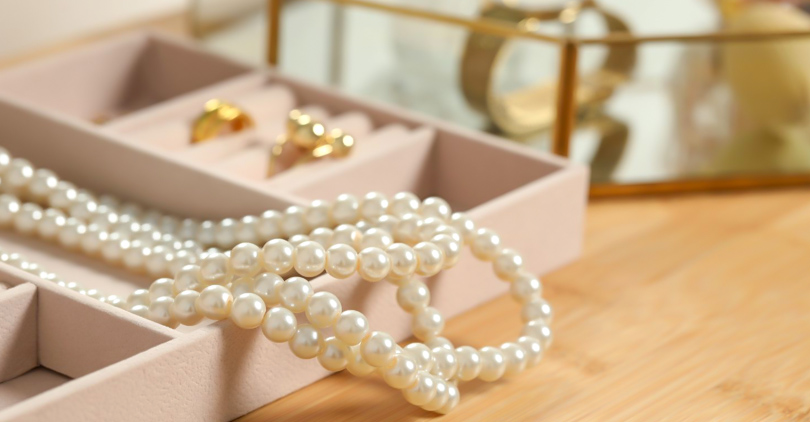
To protect your pearls from scratches and other harm, it is important to store them correctly. Place them in a soft pouch or separate section of a jewelry box that has been lined with a gentle fabric.
Avoid using plastic bags or containers for pearl storage. Plastics can release chemicals that damage these gems. For extra protection, don't mix pearls with other pieces that could potentially scratch them.
When and How to Restring Pearl Necklaces and Bracelets
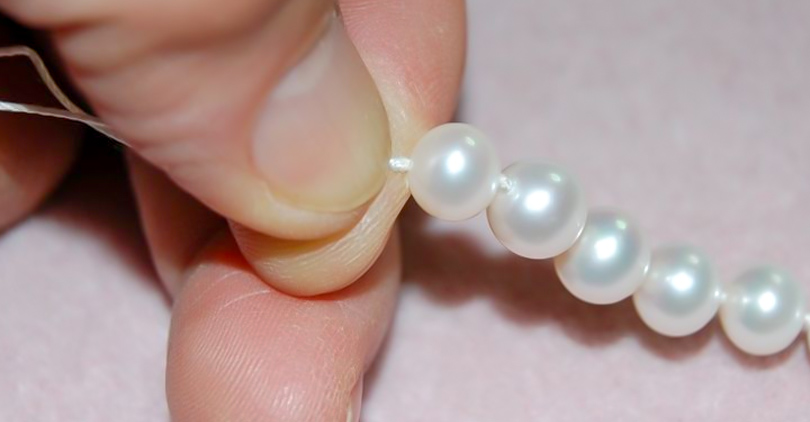
To maintain the strength and elasticity of the silk or nylon thread that holds pearls together, it is important to restring pearl necklaces and bracelets every one to two years—particularly if you wear them often.
Professional jewelers have the right expertise for this task. They will ensure each pearl has its own knot. This way, should the string snap, you won't lose all of them at once, nor will they rub against each other excessively.
Avoiding Harmful Substances and Environments

If you want to take care of your pearls, don't expose them to chemicals or extreme situations. Keep them away from things like hair spray, perfume, makeup, and household cleaners.
Put your pearls on after you've finished getting ready – and take them off before swimming or doing any exercise that could make you sweaty enough for the sweat to affect the pearls (because remember: sweat can be toxic!).
And when you're not wearing them? Find a cool, dry place for storage; don't forget about humidity levels either, as this may cause damage over time.
How to Know When Pearls Need Professional Attention
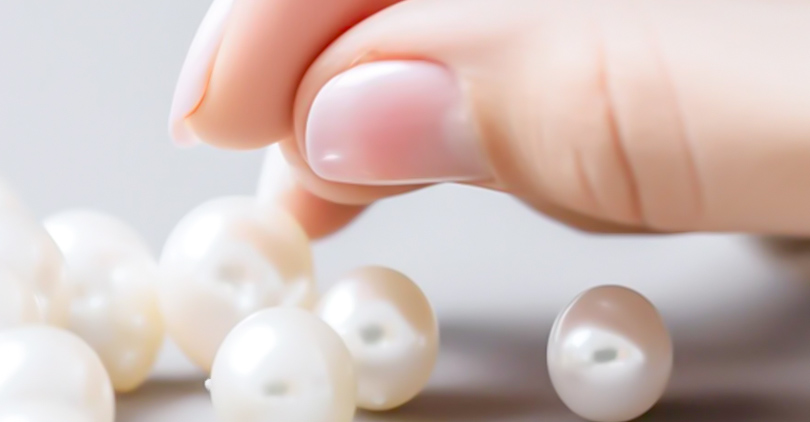
Knowing when to ask for professional assistance is important for keeping pearls in good condition. Here's how to tell if you need expert help with your pearls:
Signs of Wear and Tear
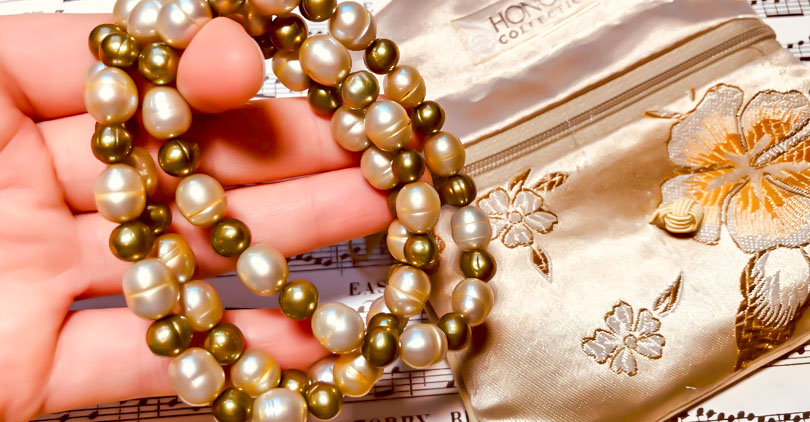
As time passes, you might observe indications of usage on your pearls. These include a surface that is boring or not smooth, a loss of shine, and scratches that are visible upon inspection.
If your pearls seem less bright than usual or if you notice areas of blemish or coloration difference, consider having them professionally cleaned.
It's also worth checking pearl necklaces and bracelets for any damage to the thread, such as stretching or fraying. This can weaken the whole structure!
When to Seek Professional Cleaning or Restringing

If your pearls have lost their luster and regular cleaning at home isn't helping, consider professional cleaning. Experts in jewelry care know how to clean pearls gently without harming their delicate nacre.
Equally important is restringing. If you see space between your pearls, notice a stretched thread, or the thread has become discolored, it's time.
Having your pearls professionally restrung every one to two years—more often if you wear them frequently—means there's secure knotting between each one (so they won't all fall off if the strand breaks) as well as reduced friction that can cause damage.
Conclusion
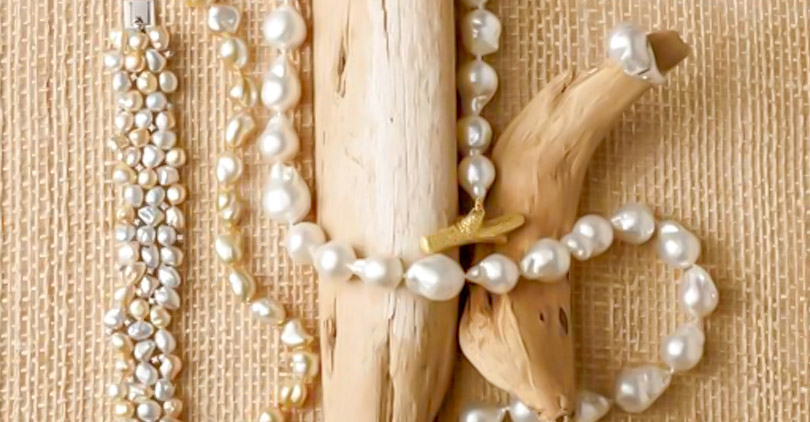
With the right care, you can keep pearl jewelry looking beautiful for years to come. Whether you have saltwater or freshwater pearls, natural or cultured ones, they'll all benefit from regular cleaning, safe storage, occasionally being restrung, and protection from chemicals and extreme conditions.
So don't hold back from buying that fabulous modern string of pearls – or enjoying your grandmother's necklace! Take our expert advice and wear them in good health. We hope to see them sparkle on your necks (or ears, wrists) long into the future.


Leave a Comment